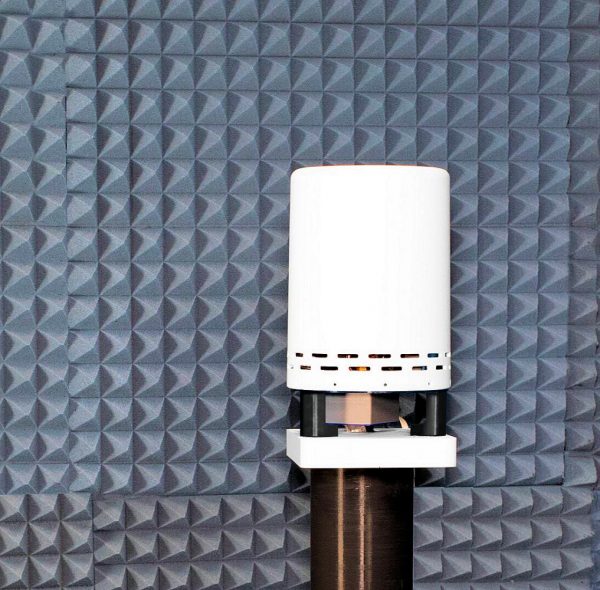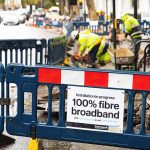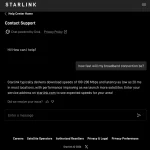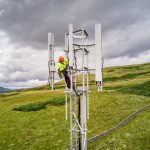Nokia Claims Solution to the Problem of mmWave 5G Broadband

Nokia claims to have moved closer to turning multi-gigabit speed capable 5G mmWave broadband for homes into a reality by developing a new type of “very high gain antenna” with a “360 Field of View,” which they say can overcome at least some of the usual signal propagation issues.
At this point it’s probably fair to say that commercial adoption of the mmW bands for low power 5G mobile communications hasn’t been terribly successful. Such bands carry a lot of potential for ridiculously fast mobile broadband speeds because there’s a lot more spectrum frequency available for operators to push their data over, but this comes with some big caveats.
The problem with mmW for low power mobile communications has been that such signals are extremely weak, and thus they’re easily disrupted and don’t tend to travel very far before their usefulness expires. Constructing a mobile network that can harness them is expensive and only really viable in busy urban areas, such as shopping malls (the network has to be quite dense, meaning a lot more cell sites with capacity fed via fibre etc.).
Advertisement
Some countries, such as the USA, have made limited 5G mmW deployments that can indeed deliver multi-gigabit speeds, albeit only around very specific locations. We’ve also seen it being used in some Fixed Wireless Access (FWA) deployments for home broadband, but again the limitations of mmW tend to turn such services into Line-of-Sight (LoS) style deployments.
Nevertheless, Nokia believes that it can help to make mmW 5G more commercially attractive to mobile operators by overcoming some of its pitfalls, which is where their new 360° high-gain mmWave technology comes into play. This takes the form of an indoor device for homes (like a 5G router), which contains three key advancements for mmW technology.
Nokia’s 360° High-Gain mmWave Technology
1. A very high gain antenna, improving the sensitivity of the FWA CPE, allowing for “high quality service and good indoor coverage in difficult circumstances.”
2. A 360 Field of View, to pick up mmWave signals from any direction, receiving both indoor and outdoor reflections.
3. Advanced analytics to select the strongest and more reliable signals. The technology takes a snapshot of the environment, analyzes the signature, and connects to the best incoming signal. Then it dynamically adapts to changing environment, e.g. dealing with moving people.
We’ve seen similar routers doing no.3 before (e.g. Deltenna’s WiBE on older networks), but the other two advancements are more interesting. By creating an INDOOR router with an antenna that can capture signals from any direction, including reflections, and dynamically adapt to changes in the environment (e.g. people moving around and opening/closing doors), Nokia may have made it possible to sell 5G mmW based home solutions as a self-install product (i.e. no need for an expensive external antenna installation on your roof).
Nokia claims that their trials have “proved that the 360° high-gain technology could connect most homes in similar environments” with speeds of “at least 1Gbps“, depending on the available mmW spectrum.
Advertisement
Sandy Motley, President of Fixed Networks at Nokia, said:
“Making indoor, self-installable mmWave FWA viable in an urban indoor environment is crucial for FWA growth. The addition of mmWave to the 5G FWA market will deliver the 5 to 10 times more capacity that is needed to support the ever more demanding subscribers and services. I am extremely proud of our Fixed Network team who have notched up yet another technical first.”
All of this sounds good, but there are a couple of issues. Firstly, it doesn’t change the fact that the source mmW signals can still only travel a relatively short distance, which is likely to result in many ISPs and mobile operators continuing to favour mid-band spectrum (e.g. 2-6GHz) over mmW. Equally, a new generation of mesh based 60GHz wireless broadband solutions may give Nokia a run for its money in the FWA space.
Secondly, Nokia doesn’t actually have a finished commercial product to show, yet. The trials are still ongoing in various urban environments (mmW is not much use in rural areas, where wide coverage is essential) and volume deployments of the new kit aren’t even expected to start until 2023.
The challenges of making mmW viable also reflect poorly (no pun intended) on the desires of some to see the future 6G mobile technology moving into even higher frequencies, such as the TeraHertz band (example test). We think it would be better to focus on enhancing mmW signals and making that more commercially viable, before jumping into THz.
Mark is a professional technology writer, IT consultant and computer engineer from Dorset (England), he also founded ISPreview in 1999 and enjoys analysing the latest telecoms and broadband developments. Find me on X (Twitter), Mastodon, Facebook, BlueSky, Threads.net and Linkedin.
« CityFibre Extend FTTP Broadband Cover in Peterborough Again






















































multi-gigabit .
kek.
can’t get even half a gigabit on 5G. Why is UK so bad at bandwidth? 4G in Sweden is faster than 5G in UK haha.
That’s funny because three has multiple gigabit sites especially the Phase 8 monopoles. And Sweden has 1/6 of population of the UK so their networks will be far less contended, EE alone has twice the subscribers numbers compared to Sweden’s entire populous.
Pretty sure the entire population of Sweden doesn’t sit all under one mast though. UK is bad at bandwidth, it’s true. I’ve got three 5G and EE. I can count the number of times I’ve seen over 100mbit on one hand.
I know there are people going woohoo look at me with 1200mbits on 5G. Those instances are rare, there are many more people getting pathetic speeds even on 5G in the UK. The thing about Sweden though (I’ve worked there before) is that the incumbent telecoms company (Telia) is keen on getting high quality kit in from the start and there’s virtually no competition to them.
The Swedish government also subsidise Telia. I’m not sure about UK but I doubt the government is subsidising any telcos.